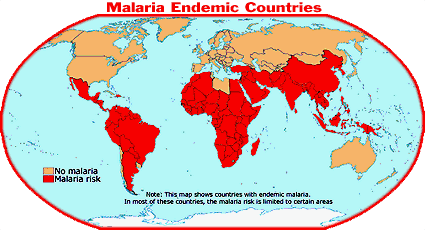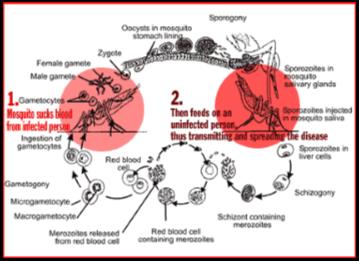

|
Poslední aktualizace: 01. 05. 2020 |
|
Stránky slouží k informování o aktuálním dění a novinkách ve vědě a výzkumu |
|
Stránky v tuto chvíli procházejí úpravami. Omlouváme se za dočasnou nefunkčnost některých odkazů. Prosím stránky otevírejte pomocí prohlížeče internet Explorer |

Rok 2020 |
|
The Mars Desert Research Station (MDRS), owned and operated by the Mars Society, is a full-scale analog facility in Utah that supports Earth-based research in pursuit of the technology, operations, and science required for human space exploration. We host an eight month field season for professional scientists and engineers as well as college students of all levels, in training for human operations specifically on the planet Mars. The relative isolation of the facility allows for rigorous field studies as well as human factors research. Most crews carry out their mission under the constraints of a simulated Mars mission. Most missions are 2-3 weeks in duration, although we have supported longer missions as well. The advantage of MDRS over most facilities for simulated space missions is that the campus is surrounded by a landscape and terrain that is an actual geologic Mars analog, which offers opportunities for rigorous field studies as they would be conducted during an actual space mission. |

Mars Desert Research Station experiment |
|
Moderní cílená léčiva jsou výzvou pro 21.století a pravděpodobně povedou k výraznému zlepšení terapeutických možností u vážných onemocnění včetně patogenů. Na modelovém systému bakteriofága byl navržen postup jeho eliminace fulerenem modifikovaným antibakteriálními peptidy. Navržené schéma možné interakce s bakteriofágem bylo vybráno na obálku speciálního čísla časopisu Monatshefte fur Chemie Chemical Monthly. |

|
On this day 10 years ago, Space Shuttle Discovery was launched to the International Space Station carrying ESA’s European Modular Cultivation System – a miniature greenhouse to probe how plants grow in weightlessness. From looking at how plants know where to grow roots to how light can influence growth, and how the tips of plant roots bend as they grow, it is a flagship research facility on the orbiting complex. Installed by ESA astronaut Thomas Reiter in 2006, it nurtures plants from seedlings to maturity, and allows both astronauts and research teams on the ground to intervene and change the conditions. Every aspect of the growing environment can be regulated – temperature, atmosphere, water and light – and two centrifuges simulate gravity up to twice Earth’s level to compare how plants respond to different degrees of gravity.A key finding from the mini-laboratory is how plants perceive gravity. It might seem obvious at first glance, but how does a plant know to develop its shoot upwards and send roots downwards? The Gravi-1 experiment showed that plants sense the direction of gravity even at very low levels. Gravi-2, in 2014, showed how plants use calcium to signal root growth under a range of gravity levels. Similarly, Genera-A studied over 1400 proteins in Arabidopsis seedlings grown in microgravity and in Earth gravity, providing insights into the effect of gravity on the molecular processes regulating plant growth.The Tropi experiments studied how Arabidopsis plants respond and grow towards light in weightlessness, as well as at lunar and martian levels. An unexpected finding was the response to red and blue light was different under simulated Moon and Mars conditions. Further experiments are under way. These experiments are important for deep-space missions, when astronauts will rely on plants for food, oxygen and waste recycling. Establishing a human outpost on the Moon or Mars will require a certain amount of self-sufficiency, and growing plants for consumption will be essential. We need to know how plants will grow on neighbouring planets. Will they still know which way to send their roots in reduced gravity or will they go haywire? EMCS is not only helping scientists to prepare for far-off colonisation but also improving our knowledge of growing crops at home. The more we know about plants the better we will be able to cultivate them – on Earth, the Moon or Mars. |


|
Skenovací elektrochemická mikroskopie je dalším vhodným nástrojem pro charakterizaci povrch materiálů, sledování procesů na těchto materiálech (koroze). Kromě toho lze však uvedené technologie využít pro studium povrchových vlastností nových materiálů, včetně nanomateriálů a v našem zájmu především sledování efektu biologických molekul na jejich povrchu. Představení konceptu technologie společnosti Sensolytic se uskutečnilo v prostorách společnosti Metrohm Inula ve Vídni. |






|
Časosběrné video měsíců Jupitera
Juno, která se dostala na oběžnou dráhu planety Jupiter, zaznamenávala během přibližování snímky, z nichž vzniklo působivé časosběrné video. Vůbec poprvé tak mají pozemšťané možnost vidět skutečný pohyb vesmírných těles, ne jen animaci.
|

|
The image combines two separate exposures taken on Nov. 20, 2016, by the High Resolution Imaging Science Experiment (HiRISE) camera on NASA's Mars Reconnaissance Orbiter. The images were taken to calibrate HiRISE data, since the reflectance of the moon's Earth-facing side is well known. For presentation, the exposures were processed separately to optimize detail visible on both Earth and the moon. The moon is much darker than Earth and would barely be visible if shown at the same brightness scale as Earth.The combined view retains the correct positions and sizes of the two bodies relative to each other. The distance between Earth and the moon is about 30 times the diameter of Earth. Earth and the moon appear closer than they actually are in this image because the observation was planned for a time at which the moon was almost directly behind Earth, from Mars' point of view, to see the Earth-facing side of the moon. In the image, the reddish feature near the middle of the face of Earth is Australia. When the component images were taken, Mars was about 127 million miles (205 million kilometers) from Earth. With HiRISE and five other instruments, the Mars Reconnaissance Orbiter has been investigating Mars since 2006. The University of Arizona, Tucson, operates HiRISE, which was built by Ball Aerospace & Technologies Corp. of Boulder, Colorado. NASA's Jet Propulsion Laboratory, a division of Caltech in Pasadena, California, manages the Mars Reconnaissance Orbiter Project for NASA's Science Mission Directorate, Washington. Lockheed Martin Space Systems, Denver, built the orbiter and collaborates with JPL to operate it. For additional information about the project, visit: |



|
Malaria Malaria remains one of the most prevalent and deadly infectious diseases across Africa, Asia, and the Americas. According to the World Health Organisation (WHO), approximately 3.2 billion people are at risk of malaria infection and there were 214 million new cases of malaria in 2015. Bearing these data in mind coupled with the rise in antimalarial resistance, there is an ever looming emphasis to develop novel therapeutic treatments that could be instrumental in eradicating malaria. Here at MedChemNet, we have teamed up with our sister journals Therapeutic Delivery and Future Medicinal Chemistry to provide you with an exclusive collection of peer-reviewed articles discussing various innovative drug discovery and delivery approaches in relation to antimalarials. Firstly, a research article discusses the potential utilization of solid self-microemulysifying drug delivery systems for the oral delivery of antimalarials in in vitro models. |




|
Botswana wetlands A river delta usually leads to the open sea, but the delta formed by the Okavango River is different. After rising in Angola and flowing through Namibia, the river meanders into Botswana, where it branches out to create an inland delta – one of the world’s most important wetlands. Wetlands, both coastal and inland, are important for people and the environment. Their many benefits include acting as natural safeguards against disasters, protecting communities most vulnerable to the devastating effects of floods, droughts and storm surges. They also provide a habitat for a multitude of animals and plants, and filter and store water. Every year, 2 February marks World Wetlands Day. It commemorates the Convention on Wetlands also known as the Ramsar Convention, which was signed on 2 February 1971 to provide a framework for national and international cooperation for the conservation and use of wetlands and their resources. This year’s theme is ‘Wetlands for Disaster Risk Reduction’. Well-managed wetlands provide resilience for communities against extreme weather and help to minimise the damage from these hazards. Coastal wetlands such as mangroves protect against flooding and serve as buffers against saltwater intrusion and erosion. Inland wetlands such as floodplains, lakes and peatlands and deltas like Okavango can reduce the risk of drought. The Okavango Delta, a World Heritage site, includes permanent swamps that cover about 15 000 sq km during the dry season but can swell to around three times this size, providing a home for some of the world’s most endangered species of large mammals. In sharp contrast, the surrounding Kalahari Desert is a lifeline for local communities and wildlife alike – and therefore it is extremely important that it is well managed. Through the GlobWetland Africa project, ESA and the African team of the Ramsar convention help to use satellite observations for the conservation, wise-use and effective management of wetlands in Africa. Through the project, African stakeholders are provided with methods and tools to fulfil their commitments to Ramsar. The Copernicus Sentinel-2A satellite captured this image of the Okavango Delta on 2 December 2016. It has been processed in false colour to highlight variations in the water cover and differences in vegetation. |




|
Laboratoř |
Projekty |
Publikace |
Popularizace |
|
|||||
|
|
|
|
|
|
|
|
|
|
|